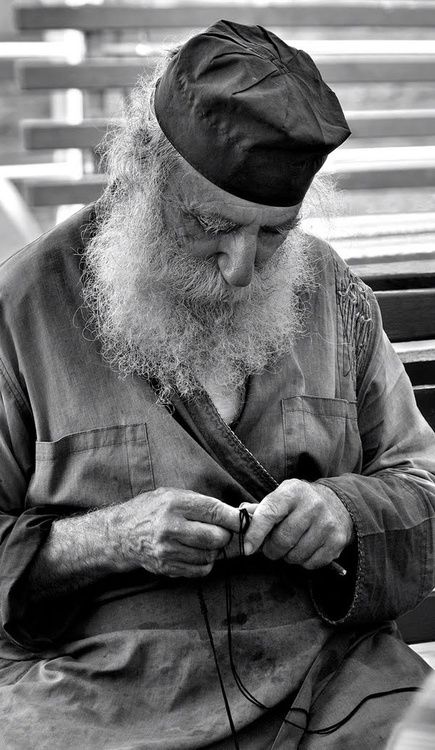I first came across the “Jesus Prayer” when I read Salinger’s Franny and Zooey in college. As I remember it a couple of brainy adolescents discover the Eastern Orthodox hesychasm –the practice of contemplation through the use of the repetitious prayer outlined in the spiritual classic The Way of the Pilgrim.
I’m afraid, like the shallow, ignorant but arrogant characters in Salinger’s novel, I am a somewhat interested dilettante when it comes to this method prayer. I have used the Jesus Prayer ever since then, but I’m not sure I have entered into the depths of the apophatic way like the monks of Mt Athos. Instead it has been for me a kind of anchor. Until recently I had forgotten how deep it has gone in my life, but it is there and I suppose it is doing some good.
For those who are not familiar, the Jesus Prayer is simply, “Lord, Jesus Christ, Son of God, Have Mercy on Me a Sinner.” The idea is that it is repeated slowly over and over. Some advocate linking it with deep breathing. It functions, I suppose, like the mantra of Eastern religions, with this important distinction: it has real content and focus whereas the Eastern mantra (as I understand it) is a word without meaning. If some folks are wary of it because they don’t like “that Transcendental Meditation guru thing” or because it is “vain repetition” they should ask whether or not praying the Hail Mary is not similar, and Evangelical charismatic types might ask themselves why they sing particularly repetitious choruses over and over and over again.
But moving on, the Jesus Prayer is particularly ingenious because, at its foundation, it is a prayer of repentance. Why is this ingenious? Because I feel repentance is the most overlooked and taken for granted part of the Christian faith.
Look at it this way: From the Garden of Eden onward the members of the human race have been blaming somebody else for their problems.
“Adam, did you eat of the tree of the knowledge of Good and Evil?
“The woman you gave me led me to eat!”
“Eve?”
“The devil made me do it!”
See? It’s the default setting. It’s the way we’re wired, and a huge proportion of our own problems and the world’s problems come back to that: blaming others.
Repentance reverses it. Repentance is saying, “It’s me. It’s my fault. I’m sorry. Have mercy.”
This is absolutely ingenious. It sets everything aright and it is at the heart of the matter because every form of false religion is an attempt to NOT do this. Legalism is the false religion that substitutes rubrics, regulations, rules and right behavior for repentance. What’s the result of legalism? Not true religion, but self righteousness and what always goes with self righteousness? Blaming others.
It is the same with the other extreme: not legalism, but license. By “license” I mean doing whatever pleases you with no restrictions. This form of false religion falls into the same trap because when you do whatever pleases you, you will eventually bump up against some other people who are doing whatever pleases them and what pleases you and what pleases them will clash. You both want the same piece of candy. What happens? You blame them for the problem.
I could go on giving examples.
But repentance steps on the head of all that. It crushes the head of the serpent.
Furthermore, repentance is the very first step of the gospel. What is there at the very beginning? “John the Baptist came preaching repentance.” Yep. Right down front. It’s the first step without which everything else in the Christian religion is void, and if you never take that first step all your canon law, your perfect liturgies, your Bible knowledge, your St Thomas Aquinas, your scholastic method, your peace and justice efforts, your prayer time with the Lord and all the rest is simply a dangerous waste of time.
That’s why I love and still use the Jesus Prayer. I use it with one of those little finger rosaries, and although I’m no expert I hope one day it might just make that very long journey from my head to my heart and bring about the transformation it promises.






Beautifully said. My first introduction to the Jesus Prayer was not literary but something out of the digital age. Bishop (then father) Robert Barron talked about it in one of his videos on YouTube. I did not have a prayer rope at the time but I did have a rosary and a wrist chaplet and so I could try saying the Jesus Prayer with those. Many months later a good friend of mine from Tennessee gave me a gift of a prayer rope from Serbia. It is of the small simple sort that they favor, with 33 knots, each tied in the form of a cross, adjoined in a circle by a silver cross featuring the Holy Theotokos and Ever Virgin Mary holding infant Jesus. That little rope became my fast companion when I wound up hospitalized. One of my patients, from a clinic where I was nursing at the time, saw me when I was in the hospital and she held my hand and the prayer rope and prayed with me. Can you find repentance when you are laying in a hospital bed? Oh bruddah you better believe it. I agree completely father, humility and repentance are key. And the Jesus Prayer keeps us focused on those essentials, imploring His mercy.